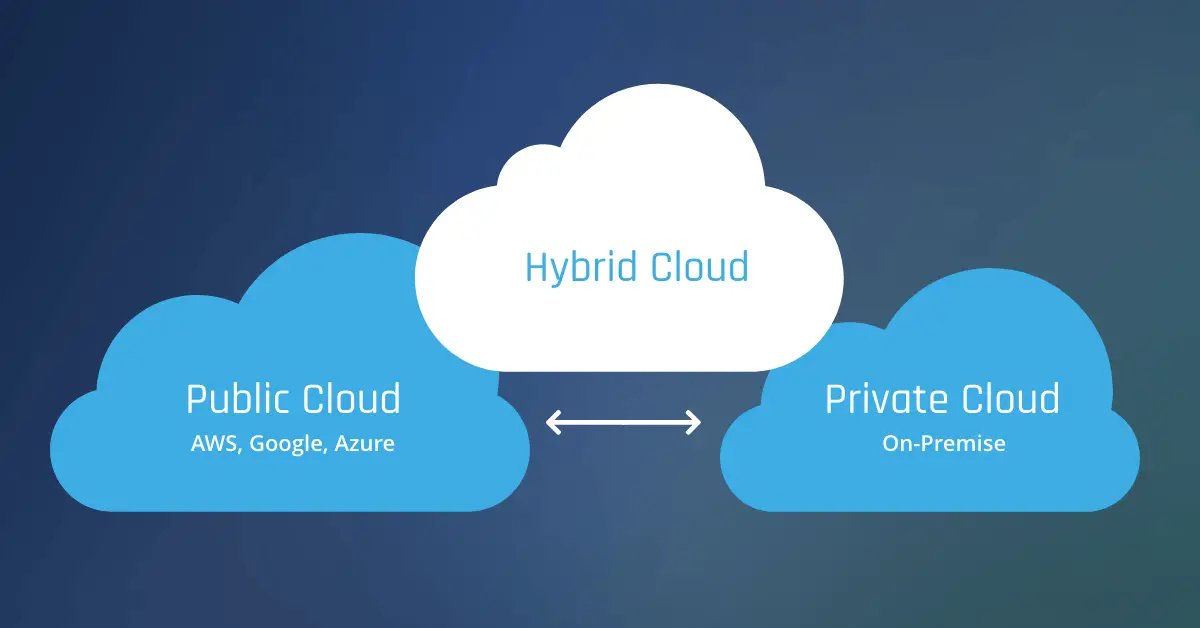Leveraging Content Delivery Networks (CDNs) for Optimized Performance in Hybrid Cloud Environments

In hybrid cloud environments, where applications and data reside across multiple cloud providers and on-premises infrastructure, optimizing performance is crucial. Content delivery networks (CDNs) play a vital role in enhancing the user experience by providing fast and reliable access to content.
Benefits of CDNs in Hybrid Cloud Environments

- Reduced Load on Origin Servers: CDNs cache static content close to end users, reducing the load on origin servers and improving response times.
- Improved Latency: CDNs have servers distributed across the globe, providing low latency access to content for users in different regions.
- Increased Scalability: CDNs can handle large amounts of traffic, ensuring that applications remain responsive even during peak load.
- Enhanced Security: CDNs can provide DDoS protection, SSL encryption, and other security measures to safeguard content and user data.
- Cost Savings: By offloading traffic from origin servers, CDNs can reduce bandwidth and server costs.
Best Practices for CDN Integration in Hybrid Cloud
- Intelligent Content Caching: Use CDNs to cache frequently accessed static content, such as images, videos, and HTML files.
- Geolocation Routing: Route users to the CDN server closest to their location to minimize latency and improve performance.
- Load Balancing: Integrate CDNs with load balancers to distribute traffic effectively between origin servers and CDN caches.
- Dynamic Content Handling: For dynamic content that cannot be cached, configure the CDN to forward requests to the appropriate origin server.
- Monitoring and Analytics: Monitor CDN performance metrics and analyze traffic patterns to optimize configurations and identify bottlenecks.
CDN Providers for Hybrid Cloud Environments
- Akamai: A global CDN with a large network of servers and advanced content optimization technologies.
- Cloudflare: A leading CDN provider with a focus on security, performance, and web optimization.
- Fastly: A CDN known for its fast and reliable caching capabilities and advanced TLS features.
- Amazon CloudFront: AWS’s CDN service, integrated with other AWS services such as S3 and EC2.
- Microsoft Azure CDN: Azure’s CDN service, offering global reach and deep integration with Azure cloud services.
Conclusion
Integrating CDNs into hybrid cloud environments is a strategic move to optimize performance, reduce latency, and enhance the user experience. By carefully selecting the right CDN provider and implementing best practices, organizations can unlock the full potential of their hybrid cloud infrastructure and deliver seamless application and content delivery.## Leveraging CdNs for Optimized Performance in Hybrid Cloud Environments
Executive Summary
Content delivery networks (CdNs) play a crucial role in optimizing the performance of applications and websites in hybrid cloud environments. By distributing content across a network of geographically dispersed servers, CdNs minimize latency, improve availability, and enhance user experiences. This article explores the key benefits of utilizing CdNs in hybrid cloud environments and provides best practices for implementing and managing CdNs effectively.
Introduction
In today’s digital landscape, the performance of applications and websites has become paramount to user satisfaction and business success. Hybrid cloud environments, which combine on-premises infrastructure with public cloud services, offer increased flexibility and scalability. However, they also introduce challenges related to content delivery latency and availability. CdNs effectively address these challenges by providing a dedicated network for content distribution, ensuring fast and reliable delivery of content to end-users.
FAQs
1. What are the benefits of using CdNs in hybrid cloud environments?
- Reduced latency and improved page load times
- Increased availability and fault tolerance
- Scalability and flexibility to meet changing traffic demands
- Enhanced security and DDoS protection
2. How do CdNs work?
- CdNs maintain a network of edge servers located in strategic locations around the world.
- Content is cached on these edge servers, reducing the distance between users and the content they are requesting.
- When a user requests content, the CDN edge server closest to the user delivers the content, minimizing latency.
3. What are the key factors to consider when choosing a CDN?
- Network coverage: The CDN’s network should cover the geographic regions where your target audience is located.
- Performance: Assess the latency, throughput, and reliability of the CDN’s network.
- Security: The CDN should provide robust security features to protect your content and user data.
- Scalability: The CDN should be able to handle fluctuating traffic demands without compromising performance.
Top 5 Subtopics:
1. CDN Architecture and Caching Mechanisms
- Edge Servers: Distributed servers that store cached content and deliver it to end-users.
- Caching Strategies: Techniques used to optimize content storage and retrieval, such as content compression, edge caching, and browser caching.
- Content Validation: Mechanisms to ensure that cached content is up-to-date and accurate.
2. CDN Performance Optimization
- Geographic Load Balancing: Routing user requests to the closest edge server to minimize latency.
- DNS Failover: Utilizing multiple DNS servers to ensure availability in the event of server failures.
- TCP and HTTP Optimization: Tuning network protocols to improve content delivery speed and reliability.
3. CDN Security and Compliance
- Encryption: Encrypting content during transmission to protect against eavesdropping and data breaches.
- DDoS Protection: Mitigating distributed denial-of-service (DDoS) attacks that can disrupt content delivery.
- Compliance with Regulations: Meeting industry-specific and geographic compliance requirements for data protection.
4. CDN Monitoring and Management
- Real-time Monitoring: Tracking CDN performance metrics, such as latency, throughput, and error rates.
- Alerting and Notification: Configuring alerts to notify administrators of performance issues or security threats.
- CDN Management Tools: Utilizing dashboards and APIs to manage CDN configurations and monitor performance.
5. CDN Cost Optimization
- Traffic Analysis: Identifying traffic patterns to optimize CDN usage and reduce costs.
- Content Compression: Reducing the size of content to minimize data transfer costs.
- Cachin Policies: Implementing cache policies to control content caching and avoid unnecessary costs.
Conclusion
CdNs are essential components for optimizing the performance of applications and websites in hybrid cloud environments. By leveraging CdNs, businesses can reduce latency, improve availability, and enhance the user experience. Implementing and managing CdNs effectively requires careful consideration of factors such as network coverage, performance, security, and cost optimization. By following best practices and continuously monitoring and optimizing CDN performance, organizations can maximize the benefits of CdNs and deliver seamless digital experiences to their customers.
Keyword Tags
- Content Delivery Networks (CdNs)
- Hybrid Cloud Environments
- Performance Optimization
- Latency Reduction
- Availability Enhancement


